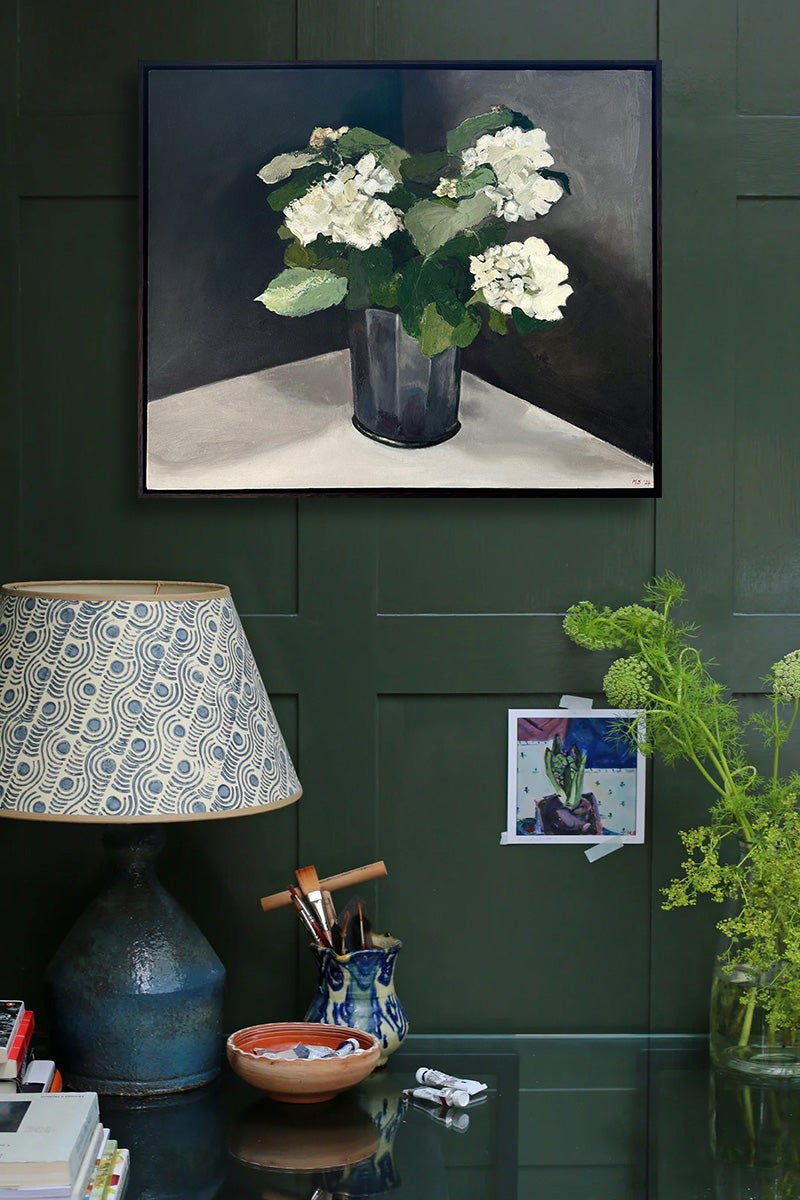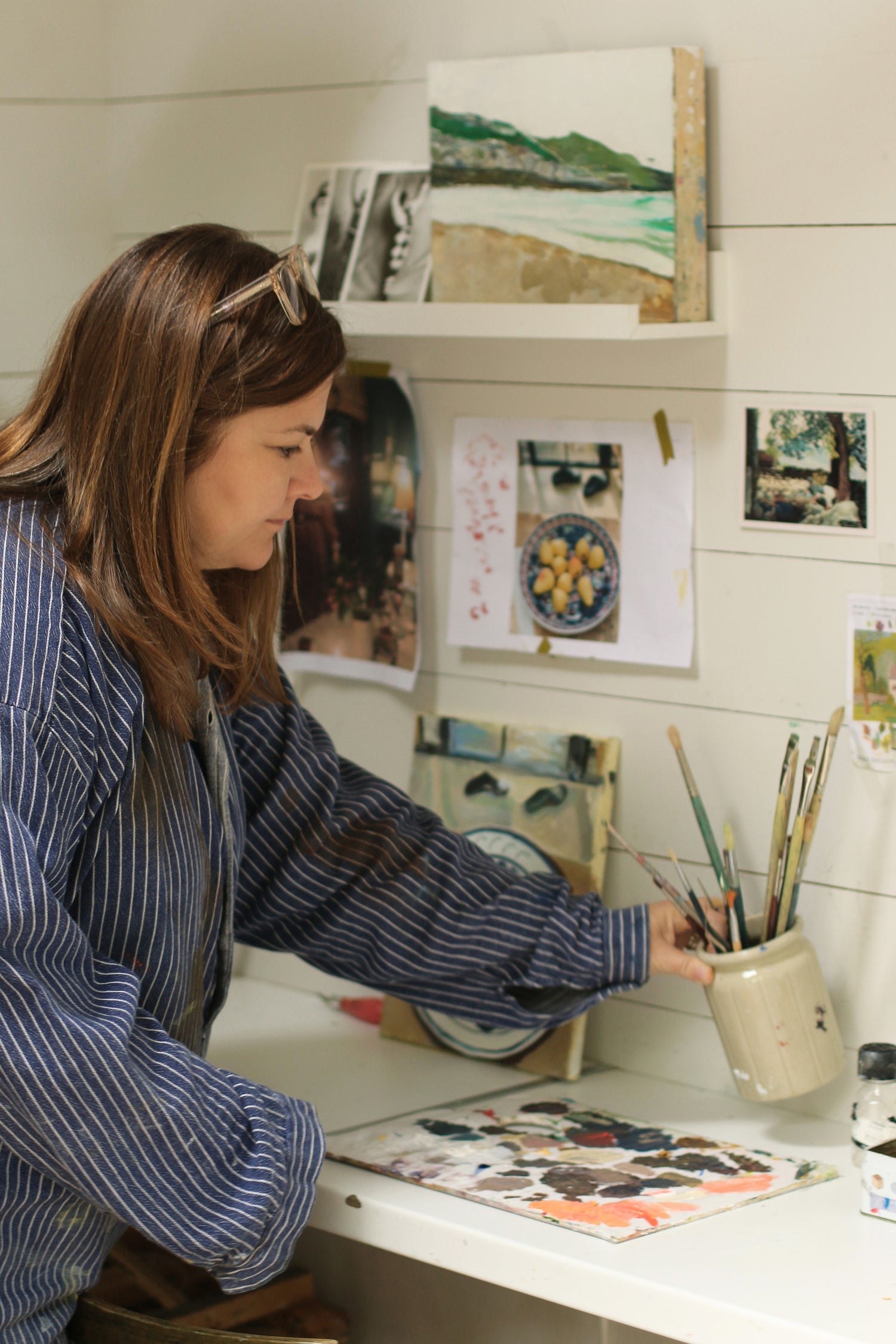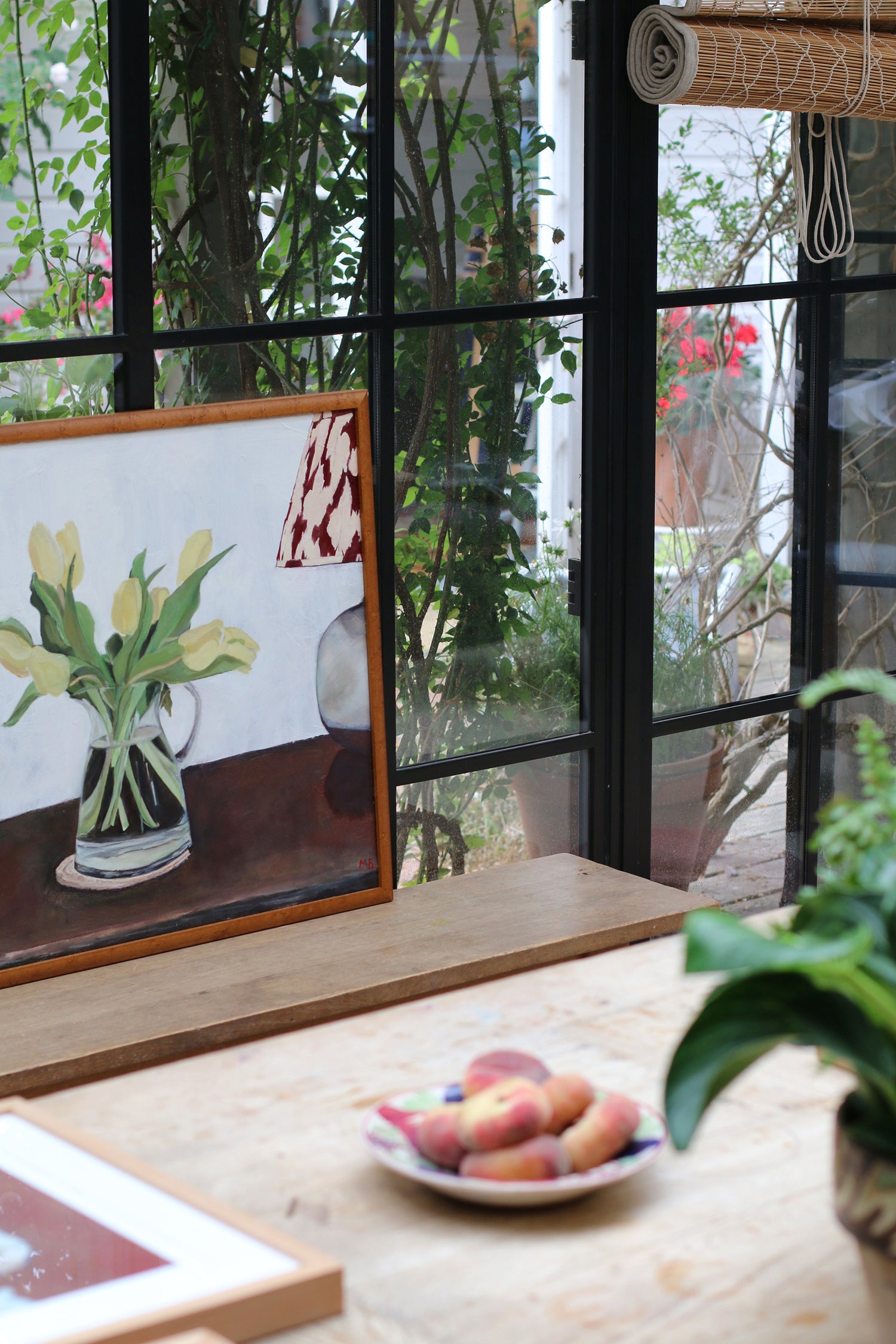
Mel Barrett Studio
Mel Barrett paints in order to capture the beauty she observes in ordinary things. She is a studio painter, typically working from photos which she takes whenever something catches her eye, which might be an arrangement of objects, or a grouping of colours or a scene which evokes a particular emotion. She works expressively, mostly in oils, sometimes alla prima, with loose brushstrokes and much energy; other times in layers, which she returns to over a number of months, working and reworking the painting until it feels right. She loves pattern and colour – patterned textiles and pottery often feature in her work – and is inspired by the modern British artists of the early-mid twentieth century who painted from life, including Duncan Grant; Vanessa Bell; Roger Fry; Dora Carrington; Winifred Nicholson; Gwen John; Cedric Morris; Christopher Wood.

"Something catches my eye and that’s always the starting point. Taking a series of snaps on my phone I later spend time looking at and examining the image, until I know what stopped me in my tracks and made me want to possess that small snapshot of time and place forever. I am a bold painter, not afraid to take risks if I think they will take me nearer my goal, which is not verisimilitude – it is articulating elements of the composition that thrill me: sometimes shapes; sometimes lines; always colour."

"I love to paint landscapes and flowers but I am also drawn strongly to domestic interiors, perhaps because home – the one sphere where we have the freedom to select and arrange the objects which surround us – is the laboratory in which we get to test our ideas of beauty and goodness. And this is interesting to me. Do beauty and goodness exist ‘out there’ – in ideal forms, like exquisite rare butterflies, awaiting discovery by the curious seeker? Or are they relative constructs, fleeting indicators of the state of mind of a culture in a particular time and place?
I am inspired by the post-impressionists of the early/middle twentieth century, who breathed life and vivacity into staid landscapes, portraits and scenes of domestic life. I’m particularly interested in the British women painters of this period. The new freedom of expression which they embraced belied the restrictions and challenges they faced trying to participate in what was very much a man’s world."
